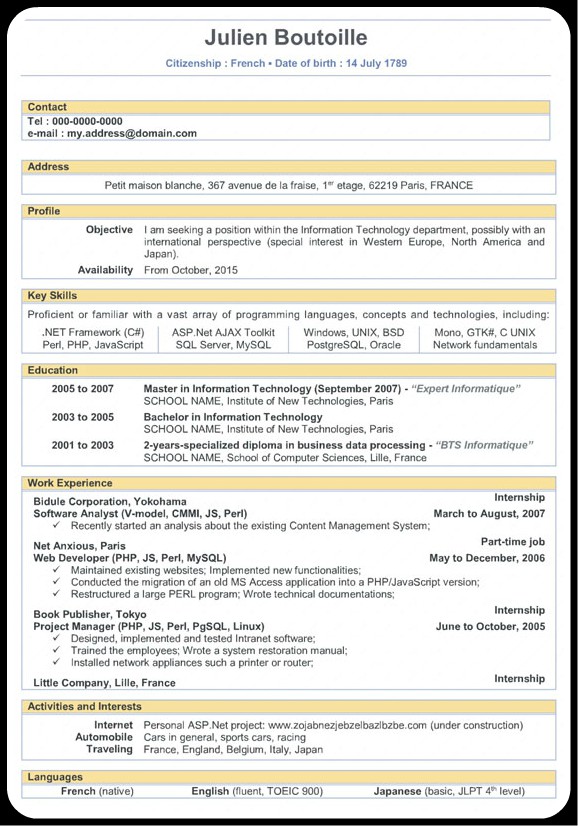Whether you’re a resume-writing professional or a newbie, it is pretty wise to look at sample resume templates with keeping your target industry in consideration. Hundreds of resume samples are available to choose, and reviewing these instances can help you craft your own version of this all-important document. So when you review the templates, be sure to select the best format, most important information to insert, and avoid mistakes. Additionally the sample resume template provides step-by-step coaching to create each section of resume comprising the summary statement, work experience, and skills section.
What is a resume?
Resume is a summary of academic and professional qualification of a person. It also describes the work history and skills of the person. A well written resume has a powerful impact on the hiring authorities.
The important components of a resume
The important and compulsory elements of a resume fluctuate being subject to the industry and the job you’re applying for. It is significant to consider your potential employer’s nature, your level of capability, as well as the expertise and certifications preferred when deciding what to include in your resume. Regardless of the all the variations, there are rudimentary segments that the majority of employers search for, and an effective resume should plan on including these elements.
- Resume summary
- Education
- Work History or experience
- Skills
Types of resume
Two major categories of resume formats are chronological and functional, but in some situations a hybrid format is the most preferred. A chronological resume is the most common format in use and it lists your work experience in chronological order, which is the best for job explorers who have a work history without any gaps. On the other hand, functional resumes, emphasis on skills and achievements rather than on the job titles and are good for those job seekers who have no experience or have gaps in their working career.
